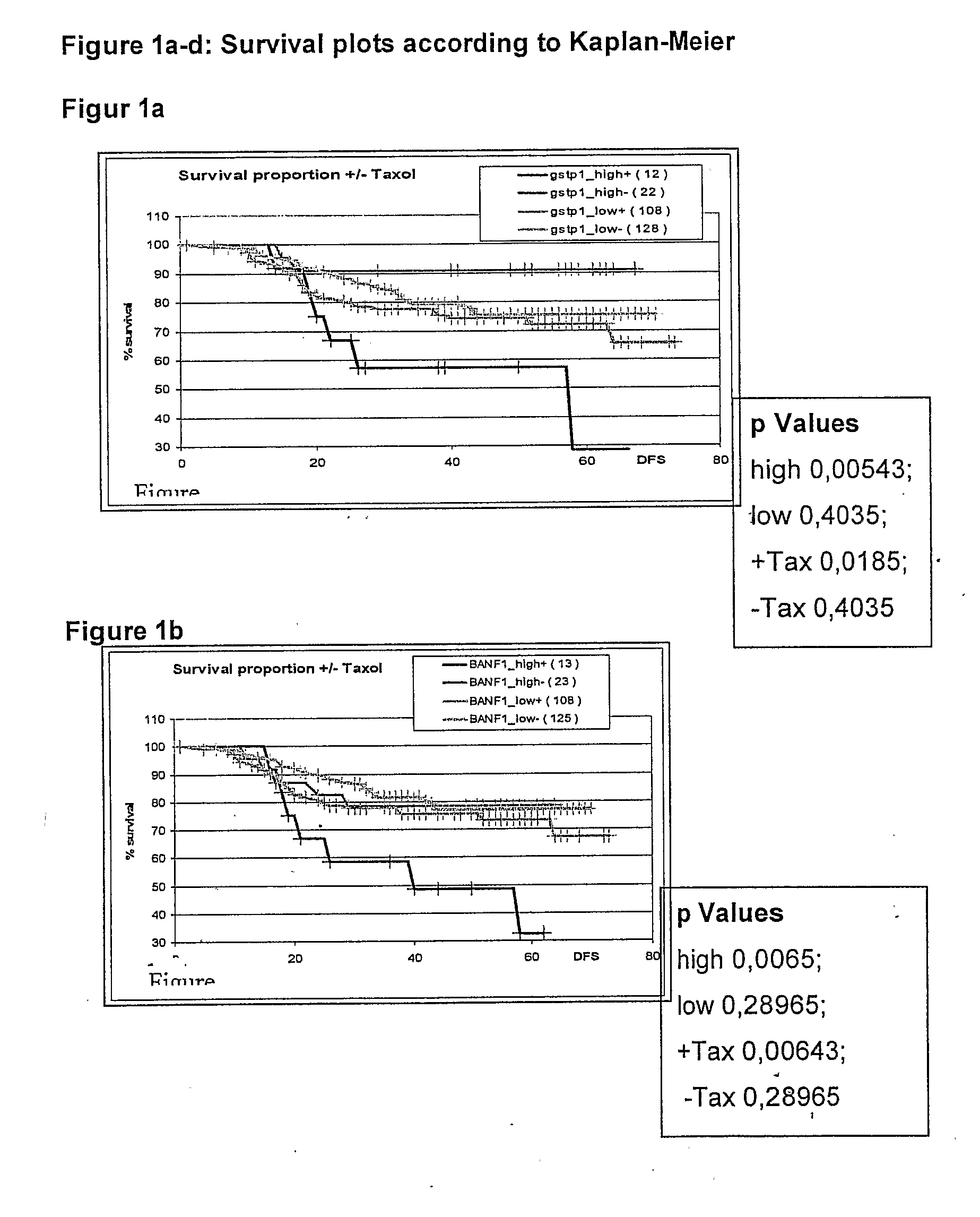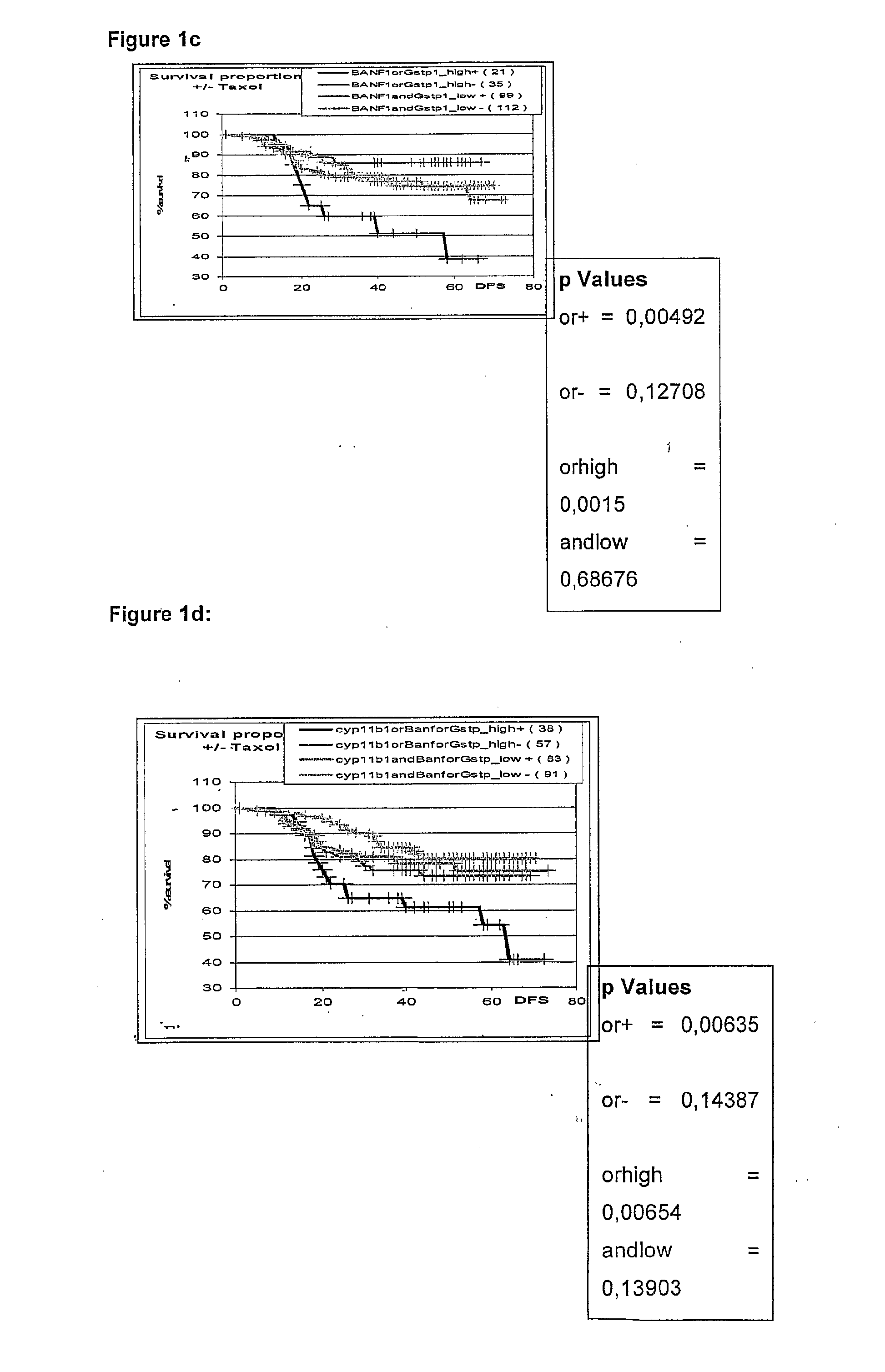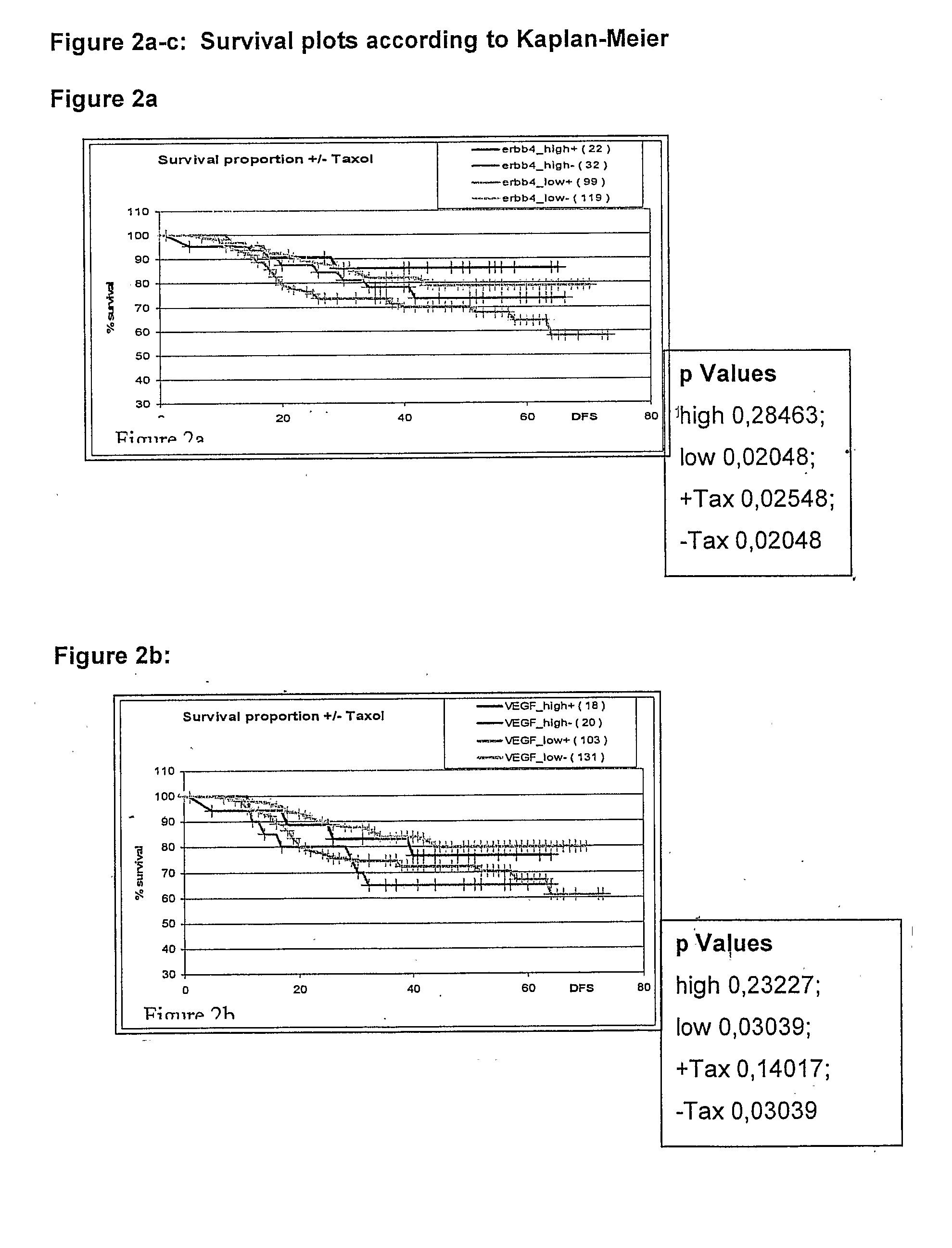Genetic Alterations Useful For The Response Prediction of Malignant Neoplasia to Taxane-Based Medical Treatments
- Summary
- Abstract
- Description
- Claims
- Application Information
AI Technical Summary
Benefits of technology
Problems solved by technology
Method used
Image
Examples
example 1
Quantitative PCR and Expression Profiling
a) Quantitative PCR and RT-PCR
[0366]For a detailed analysis of gene expression and copy number estimation of chromosomal loci by quantitative PCR methods, one will utilize primers flanking the genomic region of interest and a fluorescent labeled probe hybridizing in-between. Using the PRISM 7900 Sequence Detection System of PE Applied Biosystems (Perkin Elmer, Foster City, Calif., USA) with the technique of a fluorogenic probe, consisting of an oligonucleotide labeled with both a fluorescent reporter dye and a quencher dye, the genes listed in Table 1 and 2 were analyzed this way in performing expression measurements or DNA estimations. Amplification of the probe-specific product causes cleavage of the probe, generating an increase in reporter fluorescence. Primers and probes were selected using the Primer Express software (see Table 3 for primer- and probe-sequences); RNA-specific Primers were designed, if possible, over large intronic seque...
example 2
Identification of ARCHEONs
[0378]a) Identification and Localization of Genes or Gene Probes (Represented e.g. by the so Called Probe Sets on Affymetrix Arrays HG-U95A-E or HG-U133A-B) in their Chromosomal Context and Order on the Human Genome.
[0379]For identification of larger chromosomal changes or aberrations, as they have been described in detail above, a sufficient number of genes, transcripts or DNA-fragments is needed. The density of probes covering a chromosomal region is not necessarily limited to the transcribed genes, in case of the use of array based CGH but by utilizing RNA as probe material the density is given by the distance of genes on a chromosome. The DNA-microarrays provided by Affymetrix Inc. for example do contain hitherto all transcripts from the known human genome, which are be represented by 40.000-60.000 probe sets. By BLAST mapping and sorting the sequences of these short DNA-oligomers to the public available sequence of the human genome represented by the s...
example 3
Patient Samples from Clinical Trial and Analysis of Gene Amplifications
[0404]Ca. 280 clinical samples of breast cancer patients being treated in an adjuvant setting with E-T-CMF vs. E-CMF (Epirubicin, Taxol (+ / −), Cyclophosphamide, Methotrexate, and 5-Fluor-Uracil) have been obtained. These samples were formalin-fixed and paraffin-embedded material from primary tumours. A detailed clinical report about all patients was available. The anonymized data included all medical, therapeutical, clinical, histo- and pathological, and follow-up information incl. relapse or survival time.
[0405]More than 60 genes were analyzed according to the method disclosed in examples 1 and 2 by quantitative PCR after nucleic acid extraction from formaldehyde-fixed, paraffin-embedded tissue slides. Alterations of the analyzed genes were determined by comparison with at least two reference genes. Reference genes included mainly MMP28 and HNRPDL, but also HBB, B2M, SOD2. However any other gene not included in ...
PUM
| Property | Measurement | Unit |
|---|---|---|
| Fraction | aaaaa | aaaaa |
| Fraction | aaaaa | aaaaa |
| Fraction | aaaaa | aaaaa |
Abstract
Description
Claims
Application Information
 Login to View More
Login to View More - R&D
- Intellectual Property
- Life Sciences
- Materials
- Tech Scout
- Unparalleled Data Quality
- Higher Quality Content
- 60% Fewer Hallucinations
Browse by: Latest US Patents, China's latest patents, Technical Efficacy Thesaurus, Application Domain, Technology Topic, Popular Technical Reports.
© 2025 PatSnap. All rights reserved.Legal|Privacy policy|Modern Slavery Act Transparency Statement|Sitemap|About US| Contact US: help@patsnap.com



